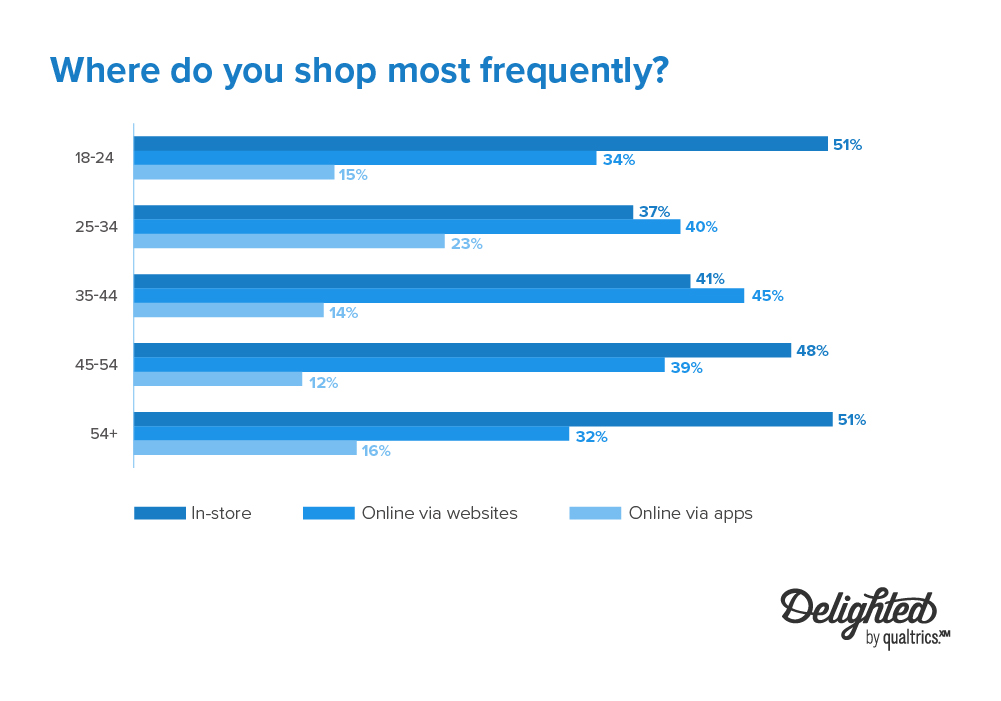There has been a lot of talks recently about how omnichannel retail is ushering in a new era of shopping, and for good reason: the concept of shopping at different points of the sales funnel means that customers can browse the web, get in touch with a sales rep, and eventually physically visit a store to buy their items. But what does this mean for the retail sector? Can it truly be called “omnichannel” if it lacks a real omnichannel experience?
Omnichannel retail is a concept that describes the spectrum of online and offline commerce. The future of retail is all about the ability to research and buy products online, then pick them up in real-life or have them delivered to your door.
Retail stores are starting to embrace the idea that they need to be more than just places that sell clothing and electronics, but are instead incorporating other services in addition to their retail sales to become more relevant to today’s consumers.
Omnichannel retail is the idea of selling goods to customers through multiple channels, including retail stores, websites, email, and social media.
The idea of shopping in different places for different products has become the norm in our society. However, in the retail environment, this has traditionally been a problem. Most customers go to one place in order to buy the physical product, then go to another location to complete the online transaction. Why not combine both?
Given the challenges presented to us by the coronavirus pandemic, it is quite evident that online and digital retail will now begin to be integrated into every aspect and industry you can think of. It definitely has several advantages, such as being able to get items delivered to you at your doorstep, barely needing to move a finger. We all want to shop more efficiently. We want to find what we want without wasting time, and we want to find it quickly, without wasting gas.
However, even in recent, and better times, where online retail is not a necessity any longer, we are seeing more of it in our everyday lives. Nonetheless, this is not to say that brick-and-mortar stores will be completely useless. Atleast, not in the near future.
There are, however, drawbacks to both online and offline retail. When shopping offline, you may find yourself having to travel to several stores to find the item you need. You might face long lines at checkout counters, unhelpful staff or lack of personal attention given to your needs and inquiries, or even a confusing store layout that makes it difficult to navigate your way through all the isles. Additionally, concerns regarding Covid-19 related safety are still a major reason to avoid shopping offline.
Nonetheless, offline, in-person shopping still retains a few of its benefits. For instance, you can see, feel, touch and try out items, which is a liberty you do not have online. You can also take items home immediately after purchasing them, which reduces the delivery delay. You also get to enjoy in-store experiences, pose questions to the store’s sales associates and easily return items in person to the store itself. And of course, offline shopping is best for purchasing items that you want to hand-pick to ensure quality, such as your daily groceries.
This is where the debate gets heated. The proponents of online retail argue that it is faster and more convenient. It allows you to choose from a large selection of products that you can avail of and allows for faster service and easy doorstep delivery. The more cost-effective prices, easy payment procedure, detailed information about the product, and the lack of sales pressure are a few more reasons online retail has gained such a great amount of popularity.
Then again, there is also the fact that a major reason that shoppers have begun choosing online over offline retail experiences is due to the safety it provides from the ongoing virus. Statistics predict the second change in consumer, or shopper behavior once covid restrictions are eased.
There are also some obvious concerns we face with online shopping. These include product quality issues, digital payment failures and unclear return or warranty policies. Many people also dislike online shopping due to the lack of shopping support, difficulty finding products on online stores through websites and apps, and unclear or unhelpful website policies. Additionally, given the cynicism and paranoia around online retail, which is to an extent justified, also leads to data privacy concerns and security issues amongst many.
Indeed, there has to be a hybrid model, which is why the omnichannel retail experience is one of the fastest-growing categories in retail today. In the omnichannel retail world, customers can seamlessly cross-sell and cross-buy from a multitude of online and offline channels. They can browse, select and purchase their items from a website, a TV, a mobile phone, a tablet, and even a smartwatch – all at the same time.
Omnichannel retail is the future of shopping. It’s a proven way to increase sales and grow businesses. From browsing online to picking up in-store, consumers have more choices than ever before. Omnichannel retail is a way to not only engage customers but to empower them. It’s a strategy that helps businesses understand and engage customers in a way that will have a lasting impact.
Omnichannel retail is a relatively new phenomenon, so it’s hard to say whether it is the future of shopping. But there is no denying that technology has driven the retail industry to embrace it with open arms. The question now is whether retailers will be able to leverage it to their advantage. The evolution of retail has been pronounced in recent years. Consumers are demanding more options, more convenience, and more information.
For that purpose, that is, options, convenience and information, the omnichannel technique indeed would seem to be the future of retail. Through online channels, people can explore a virtually endless variety of options, all at the comfort of their homes, and easily gain information about the product.
Store traffic will very probably be reduced indefinitely. When you observe the move to e-commerce, whether it’s comparatively more or less, you’ll see that some of your consumers aren’t returning to the shop or aren’t returning as frequently as they used to. As a result, being able to optimise the value of each journey will be critical. A customer going into a business in the future will feel completely integrated—that is, affirmations from social media or friends and family who aren’t even close by will be included into that store in some way.
A significant portion of resource investment—both human capital and monetary capital expenditure—must shift away from building new brick-and-mortar businesses and toward technology. Shopping will also become much more customised in the future. It will seem as though the salespeople at that store know you as if you were a close friend or a personal stylist.
As soon as you walk in, they’ll know exactly when you last visited and, as a result, what your replenishment requirements are. And all the shop can do is affirm, “Here’s what you should have out at home.” Is it better if we just reorder it for you?” But that’s not the major reason you’d go to the store; after all, you could do anything on your phone, right? You’d walk in because they’d lure you in by saying things like, “New items, new brands, just for you, tailored, personalised.” Come in and have a look.”

In summary, omnichannel retail has huge potential. It is, however, important for retailers to be able to get the customers in the door. In order to get customers to come to their stores, they must provide a seamless experience. Customers must also be able to return the product easily if they do not like it or face other issues regarding the quality of the product.

The best companies will understand that the customer wants to use whatever channel is most convenient at the time, and will provide seamless experiences between their online and offline offerings.
In this article, we have discussed how with the ever-increasing speed of the digital revolution, bricks and mortar retail stores will be replaced by retailers who do not have a physical store at all, but whose business model is based on selling directly to consumers from their website. In conclusion, most physical stores will be replaced by online shops, and the future of shopping will focus on providing a seamless experience for consumers.
The digital touchpoints are more than just channels or tools. They are the embodiment of the brand’s soul. With the growing demand for omnichannel shopping, retailers have to ensure the success of the shoppers. This is the only way that the retailers can compete with the other retailers in the market. In order to ensure that the shoppers are satisfied with their products and services, the retailers need to adopt omnichannel retail strategies.















